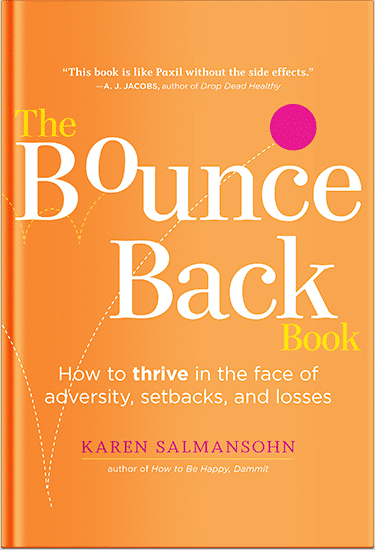 When traditional medical treatments fail and time is running out, terminally ill patients across the United States now have expanded access to experimental therapies thanks to a growing network of Right-to-Try laws. These legislative measures, which have gained momentum over the past decade, represent a fundamental shift in how dying patients can access potentially life-saving treatments that haven’t yet completed the full FDA approval process.
When traditional medical treatments fail and time is running out, terminally ill patients across the United States now have expanded access to experimental therapies thanks to a growing network of Right-to-Try laws. These legislative measures, which have gained momentum over the past decade, represent a fundamental shift in how dying patients can access potentially life-saving treatments that haven’t yet completed the full FDA approval process.
The Legislative Landscape
Right-to-Try legislation has swept across the nation with remarkable speed and bipartisan support. Beginning with individual state initiatives, the movement culminated in federal legislation signed into law in 2018. Today, all 50 states have enacted some form of Right-to-Try law, creating a comprehensive framework that allows terminally ill patients to access experimental drugs, devices, and treatments without having to navigate the traditional FDA expanded access program.
The federal Right-to-Try Act, formally known as the Trickett Wendler, Frank Mongiello, Jordan McLinn, and Matthew Bellina Right to Try Act, established uniform standards while preserving state-level protections. This legislation was named after patients who advocated for expanded access to experimental treatments during their own battles with terminal illnesses.
How Right-to-Try Works
Under these laws, patients diagnosed with terminal illnesses can request access to investigational treatments that have completed Phase I safety trials but haven’t yet received full FDA approval. The process requires several key conditions to be met: the patient must have exhausted all approved treatment options, possess a life-threatening condition, and provide informed consent understanding the experimental nature of the treatment.
Physicians play a crucial role in this process, as they must recommend the experimental treatment and oversee its administration. The treating doctor must also determine that the potential benefits outweigh the risks for the individual patient. Importantly, insurance companies are not required to cover these experimental treatments, placing the financial burden on patients and their families.
Drug manufacturers maintain the right to refuse requests for their investigational treatments, and they cannot be compelled to provide them under Right-to-Try laws. This provision protects companies from being overwhelmed with requests while allowing them to maintain control over their clinical trial processes and limited drug supplies.
Expanding Access Beyond Traditional Pathways
Before Right-to-Try laws, terminally ill patients seeking experimental treatments had limited options. The FDA’s expanded access program, also known as compassionate use treatments, required extensive paperwork and could take weeks or months to process. While this program remains available and has been streamlined in recent years, Right-to-Try laws provide an alternative pathway that bypasses FDA oversight entirely.
This expanded access program has proven particularly valuable for patients with rare diseases, where traditional clinical trials may be limited or unavailable. For conditions affecting small patient populations, Right-to-Try laws can provide access to treatments that might otherwise remain out of reach during the final stages of illness.
Patient Stories and Medical Outcomes
The impact of Right-to-Try laws can be seen in individual patient experiences across the country. Cancer patients have gained access to cutting-edge immunotherapies, individuals with ALS have tried experimental neuroprotective treatments, and those with rare genetic disorders have accessed gene therapies still in development.
However, the medical community remains divided on the effectiveness and safety of these expanded access provisions. Supporters argue that terminally ill patients should have the right to try any treatment that might help when conventional options have failed. They contend that the potential benefits outweigh the risks when facing certain death.
Critics, including some physician organizations, express concerns about patient safety and the potential for false hope. They argue that the FDA’s existing expanded access program provides adequate protection while maintaining necessary oversight. Some worry that bypassing FDA review could expose vulnerable patients to unnecessary risks or ineffective treatments.
Regulatory and Safety Considerations
The implementation of Right-to-Try laws has created a complex regulatory environment where state and federal laws intersect with FDA oversight. While these laws allow patients to access experimental treatments without FDA approval, they don’t eliminate other regulatory requirements. Manufacturers must still comply with manufacturing standards, and healthcare providers must adhere to professional medical standards.
Medical professionals have raised questions about liability protection under these laws. While Right-to-Try statutes generally provide some protection for physicians and manufacturers, the extent of this protection varies by state and continues to evolve through court decisions and regulatory guidance.
Looking Forward
The future of Right-to-Try laws will likely involve continued refinement and clarification of their implementation. As more patients access experimental treatments through these pathways, data collection and analysis will become increasingly important for understanding their effectiveness and safety.
Some advocates push for further expansion of these laws to include earlier-stage experimental treatments or to cover additional types of medical conditions. Others call for better integration with existing FDA programs and improved data sharing to benefit future patients and medical research.
The pharmaceutical industry continues to adapt to this new landscape, with some companies developing specific protocols for Right-to-Try requests while others maintain restrictive policies about providing investigational treatments outside of clinical trials.
Conclusion
Right-to-Try laws represent a significant expansion of treatment options for terminally ill patients nationwide. While debate continues about their safety and effectiveness, these laws have fundamentally changed the landscape of experimental treatment access. For dying patients and their families, Right-to-Try legislation offers hope and autonomy in making end-of-life medical decisions, even as the medical community continues to evaluate their long-term impact on patient care and medical research.
As these laws mature and more data becomes available, their true effectiveness in saving lives and improving outcomes for terminally ill patients will become clearer, helping to shape future policy decisions about experimental treatment access.
P.S. Before you zip off to your next Internet pit stop, check out these 2 game changers below - that could dramatically upscale your life.
1. Check Out My Book On Enjoying A Well-Lived Life: It’s called "Your To Die For Life: How to Maximize Joy and Minimize Regret Before Your Time Runs Out." Think of it as your life’s manual to cranking up the volume on joy, meaning, and connection. Learn more here.
2. Life Review Therapy - What if you could get a clear picture of where you are versus where you want to be, and find out exactly why you’re not there yet? That’s what Life Review Therapy is all about.. If you’re serious about transforming your life, let’s talk. Learn more HERE.
Think happier. Think calmer.
Think about subscribing for free weekly tools here.
No SPAM, ever! Read the Privacy Policy for more information.
One last step!
Please go to your inbox and click the confirmation link we just emailed you so you can start to get your free weekly NotSalmon Happiness Tools! Plus, you’ll immediately receive a chunklette of Karen’s bestselling Bounce Back Book!


 When
When 